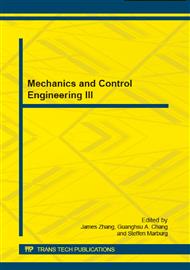p.341
p.345
p.350
p.357
p.362
p.368
p.373
p.380
p.385
Control Laws Design of a Turboprop Engine
Abstract:
The goal of this paper is to describe a full approach of a decentralized control strategy applied on an industrial multivariable application: a turboprop engine. A first step consists in the linearization of the turboprop engine model around different operating points. After noting strong interactions, decoupling methods are tested in order to reduce the coupling effects. A decentralized strategy is then set up, and PID controllers are further designed. The control laws are finally implemented in order to command a non-linear model of a turboprop engine.
Info:
Periodical:
Pages:
362-367
Citation:
Online since:
December 2014
Authors:
Price:
Сopyright:
© 2015 Trans Tech Publications Ltd. All Rights Reserved
Share:
Citation:


